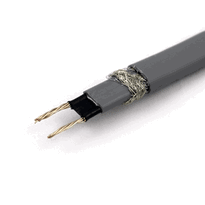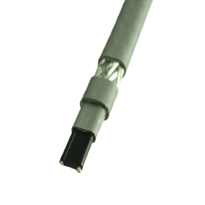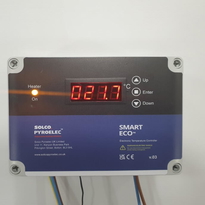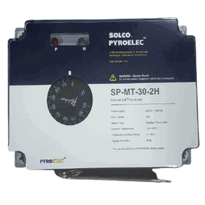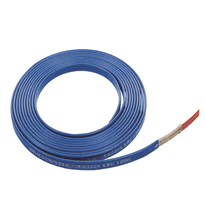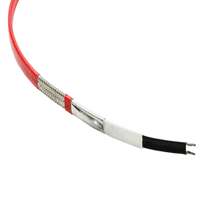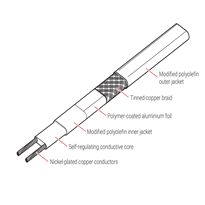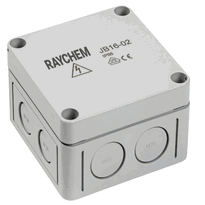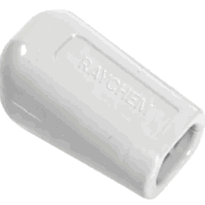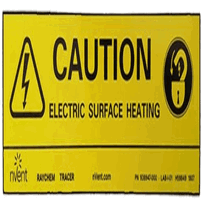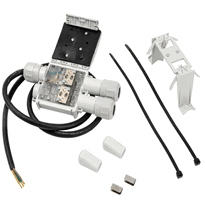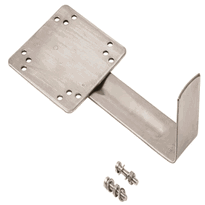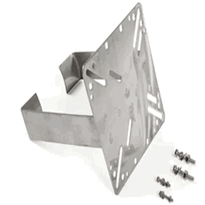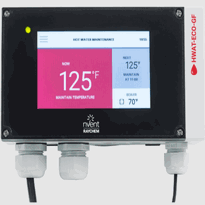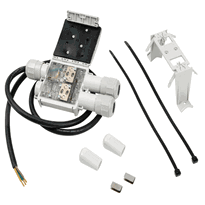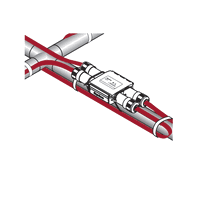Heat Trace for Pvc Drain Pipe
Heat trace systems for PVC drain pipes are vital in protecting against freezing and potential damage during cold weather conditions in the UK. They function by maintaining the pipe temperature just below or above the freezing point, ensuring continuous operation and preventing issues such as blockages or pipe bursts.
When selecting a suitable heat trace system, it is important to match the cable wattage to the pipe size and to the level of insulation used. Self-regulating cables are often preferred due to their safety features and energy efficiency, as they adjust their power output based on ambient temperature.
Installation involves accurate measurement of the pipe length to ensure coverage, secure attachment of the cable at regular intervals, and the utilisation of compatible, temperature-controlled systems. Proper fixing methods and insulation are necessary to optimise performance and minimise heat loss.
Maintaining safety standards, ensuring durability, and positioning the heat trace system correctly are key to extending its lifespan and preventing operational risks.
Further detailed procedures will be provided to guide effective installation, ongoing maintenance, and troubleshooting of heat trace systems for PVC drain pipes in the UK climate.
Understanding the Importance of Heat Trace for PVC Drains
Heat trace systems are vital components in preserving the functionality and lifespan of PVC drain pipes in cold climates, as they help prevent freezing and the resultant damage caused by ice expansion. When pipes freeze, the water inside expands, increasing the risk of cracks or bursts that can lead to costly repairs and water damage. Heat tracing works by continuously warming the pipes, maintaining temperatures above freezing while staying within PVC’s safe operational range of approximately 58–71°C. Automated controls are integrated to monitor pipe temperatures in real-time, automatically shutting off the heat when appropriate to prevent overheating and subsequent pipe deterioration. These systems also enhance safety by reducing the likelihood of leaks and blockages caused by ice and frost. Proper utilisation of heat trace technology significantly extends the lifespan of PVC pipes, ensures consistent drainage performance, and minimises the risks associated with freeze-induced damage both internally and externally. Using electric trace heating products with automatic thermostats ensures consistent temperature regulation, which is essential for avoiding damage to plastic piping. Incorporating high-quality insulation solutions can further improve the efficiency of heat tracing systems, helping to retain heat and reduce energy consumption.
Choosing the Right Heat Trace System for PVC Pipes
Selecting an appropriate heat trace system for PVC pipes requires careful consideration of several factors to ensure effective, safe, and durable freeze protection. Critical aspects include matching the cable wattage to the size and wall thickness of the pipe, accounting for insulation and environmental heat loss, and preventing overheating that can deform or weaken PVC.
Understanding the different types of heat trace cables is key to making an informed choice. Self-regulating cables adjust their heat output based on the ambient temperature, which helps reduce the risk of overheating and provides energy-efficient operation. Constant wattage cables, on the other hand, deliver a fixed level of heat, requiring precise wattage management to avoid exceeding PVC’s temperature limits.
Compatibility with PVC’s maximum temperature tolerance is vital to prevent damage. PVC pipes typically have a maximum continuous operating temperature of around 60°C, so selecting a heat trace solution that operates safely within these limits is essential.
When choosing a system, consider the following aspects:
Cable Type: Determine whether self-regulating or constant wattage is best suited to your environment.
Application Needs: For freeze prevention in exposed or vulnerable pipes, self-regulating cables often provide safer, more energy-efficient solutions.
Environmental Conditions: Outdoor and exposed applications benefit from cables with additional durability, such as silicone jacketed options, which offer enhanced UV and chemical resistance.
Installation Setup: Proper insulation should complement the heat trace system to improve efficiency and reduce heat loss. Calculating the heat loss based on local climate conditions and pipe specifications helps in selecting appropriate wattage.
Temperature Regulation Advantages: Self-regulating heat trace cables have built-in features that help prevent overheating compared to fixed wattage cables, making them especially suitable for sensitive PVC pipe systems. Furthermore, selecting a compatible system that aligns with building safety standards ensures compliance and peace of mind.
Below is a table summarising key features of common heat trace options suitable for PVC pipes:
Cable Type |
Temperature Control |
Durability Features |
Application Suitability |
| Self-regulating | Adjusts heat output according to ambient temperature | Chemical and temperature resistant | Freeze prevention and temperature maintenance in varying conditions |
| Constant wattage | Fixed heat output | Fixed power settings for predictable performance | Maintaining specific temperature levels |
| Silicone jacket | Enhanced durability | UV and chemical resistant | Outdoor use, exposed to harsh environmental conditions |
| Specialised | Built-in safety features, such as thermal cut-outs | Long-lasting components designed for rigorous use | Long-term freeze protection in demanding environments |
Step-by-Step Installation Guide for PVC Drain Pipe Heating
Preparing to install a PVC drain pipe heating system requires careful planning and methodical execution to ensure safety, efficiency, and long-term reliability.
First, determine the length of the pipe to be heated and select an appropriate heat trace cable, preferably a self-regulating type, for optimal performance. Self-regulating heat trace cables adjust their output based on surface temperature, reducing energy waste and preventing overheating. Next, calculate the necessary length of cable based on the pipe’s dimensions and the spiral factor, ensuring even coverage along the entire length.
Gather all materials, including the heat trace cable, aluminium tape, and securing supplies, and plan the installation route to guarantee complete coverage with no gaps.
Key considerations during installation include:
- Attaching the cable at a 45° angle to promote effective heat transfer.
- Securing the cable at intervals of 15 to 30 centimetres (6-12 inches) using heat tape or fibreglass ties.
- Applying aluminium tape beneath the cable to improve heat transfer and distribution.
- Avoiding overlaps in the cable to prevent hot spots and uneven heating.
Careful adherence to these steps will ensure a safe and efficient heating system for your PVC drain pipes, suitable for the UK environment and climate.
Safety Measures and Maintenance Tips for Heated PVC Drain Pipes
Implementing proper safety measures when installing and maintaining heated PVC drain pipes is essential to prevent electrical hazards, ensure system longevity, and protect property. Use only self-regulating or automatic heat trace cables specifically designed for plastic pipes. Avoid non-automatic tapes, which can cause uneven heating and potential damage to the pipe or system.
Ensure all electrical connections are made using Ground Fault Circuit Interrupter (GFCI) outlets. This provides critical protection against electrical shocks and enhances safety during system operation. Regularly inspect heat tape connections and insulation for signs of damage or wear. Promptly replace or repair faulty components to maintain optimal performance and reduce the risk of freezing or system failure.
Proper insulation is vital in maintaining efficiency. Use waterproof wraps, securing them at appropriate intervals—typically every 30 to 50 centimetres—to minimise heat loss and prevent moisture ingress. Overlap insulation layers by approximately 2.5 to 5 centimetres (about 1–2 inches) to ensure a continuous protective barrier around the pipe and heat tape. Additionally, choosing the right pipe insulation materials helps maximize thermal efficiency and system durability.
Correct cable placement is crucial. Position the heat trace cable according to the manufacturer's instructions, avoiding tight bends or stress points that could cause deterioration or failure. When securing cables and insulation, use materials recommended by the manufacturer, such as specialised waterproof tapes or straps, to prevent movement and exposure to the elements.
Conduct regular maintenance checks to identify signs of damage or deterioration. Inspect the heat tape, insulation, and connections periodically, especially before the winter season. If damage is detected, replace affected parts immediately to uphold system integrity and safety.
Monitoring the system is essential. Use thermostats or temperature controllers designed for heated pipe applications to prevent overheating. Keep a detailed inspection record to track the condition of the system over time and facilitate timely repairs.
In summary, diligent installation and regular maintenance—focusing on insulation integrity, electrical safety, proper cable placement, and prompt repairs—are key to ensuring the safe, efficient, and long-lasting operation of heated PVC drain pipes. Research shows that improper installation can increase fire risks, making adherence to safety practices even more critical.
Aspect |
Practice |
Purpose |
| Insulation | Overlap layers by 2.5–5 cm (1–2 inches), waterproofed cover, secured at intervals | Maintain consistent heat, prevent moisture ingress |
| Electrical Safety | Use GFCI outlets, secure cables with suitable waterproof tape or straps | Prevent electrical shocks, ensure safety and reliability |
| Maintenance and Inspection | Regularly check for damages, promptly replace faulty heat tape or insulation | Preserve system function, prevent failures |
Common Challenges and Solutions When Using Heat Trace on PVC
Using heat trace cables on PVC drain pipes presents several challenges that require careful consideration to prevent damage and ensure system reliability.
One of the primary concerns is temperature control. PVC is susceptible to melting or deforming if exposed to excessive heat. Non-self-regulating cables, in particular, can overheat if not properly monitored and managed. It's essential to select the correct cable type and maintain appropriate temperatures to prevent deterioration of the pipe material.
Poor installation techniques can also pose significant problems. Insufficient fastening or the presence of sharp bends can cause cable movement, which may damage the pipe or compromise the electrical system. Ensuring proper fixing and gentle, gradual bends during installation helps maintain integrity and prevents unnecessary stress on the pipe and cable.
Managing thermal expansion is another critical aspect. Excessive heat can cause PVC pipes to expand, leading to stress on joints or even failure if expansion isn't adequately accommodated. Implementing suitable expansion loops or flexible joints can mitigate these risks effectively.
Power consumption is an important consideration. Overuse of heat trace cables increases energy costs and the risk of overheating. It's vital to use appropriate control systems and temperature sensors to regulate heat output efficiently and reduce unnecessary energy use.
Additionally, implementing Multifoil Insulation around drain pipes can improve thermal regulation, reducing the strain on heat trace cables and enhancing overall system efficiency.
Finally, selecting compatible, certified heat trace products is fundamental to ensuring long-term reliability and safety, especially in environments subject to moisture or chemical exposure. Always use products that meet relevant UK standards and are designed for application-specific conditions.
Conclusion
Proper application of heat trace systems on PVC drain pipes enhances operational reliability by preventing freezing and maintaining flow. Careful selection, precise installation, adherence to safety protocols, and regular maintenance are essential to minimise hazards and ensure system longevity. Addressing common challenges with suitable solutions helps optimise performance and safety. Implementing these practices promotes effective heat management, reducing risks associated with cold-weather pipe failure while ensuring compliance with safety standards.








